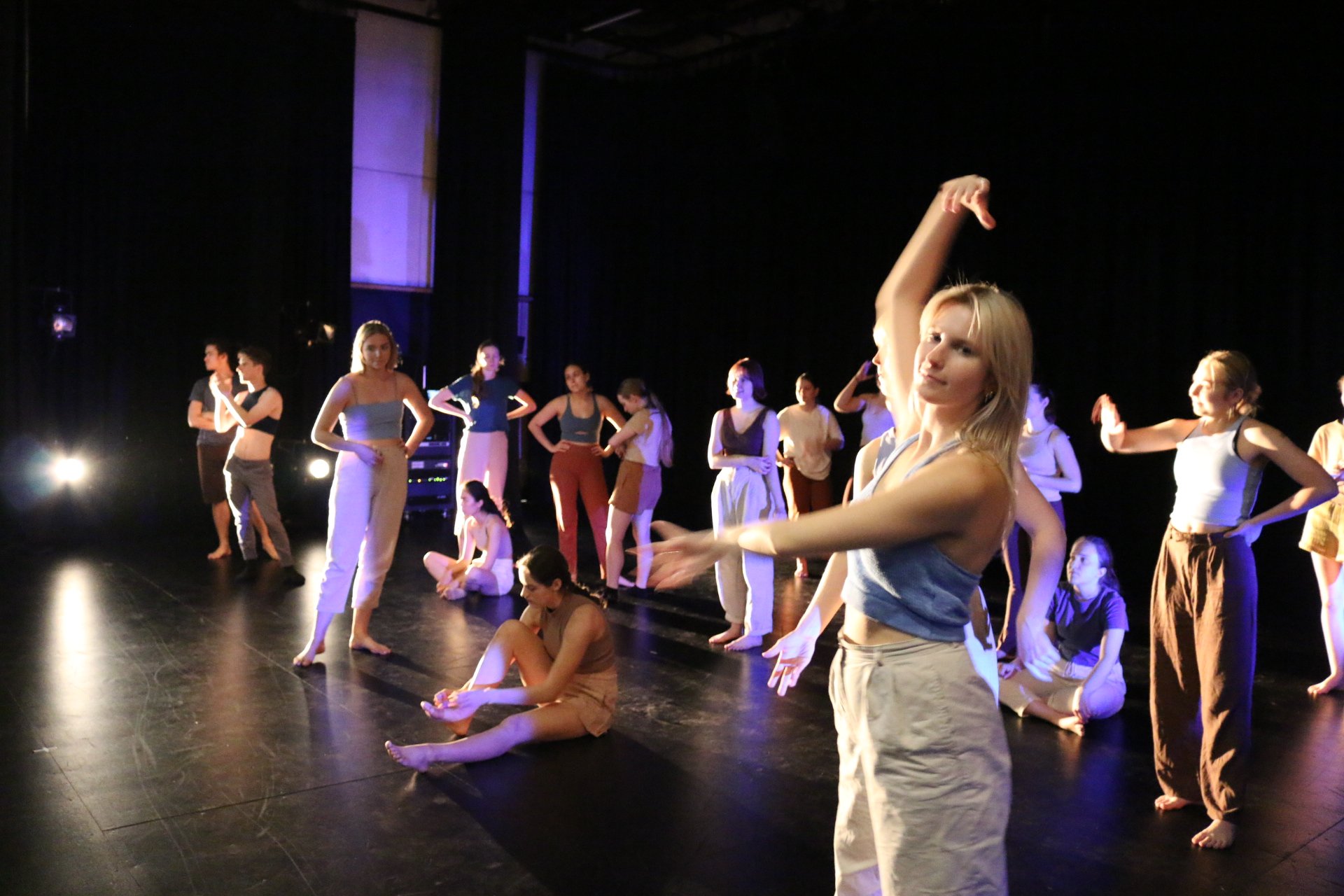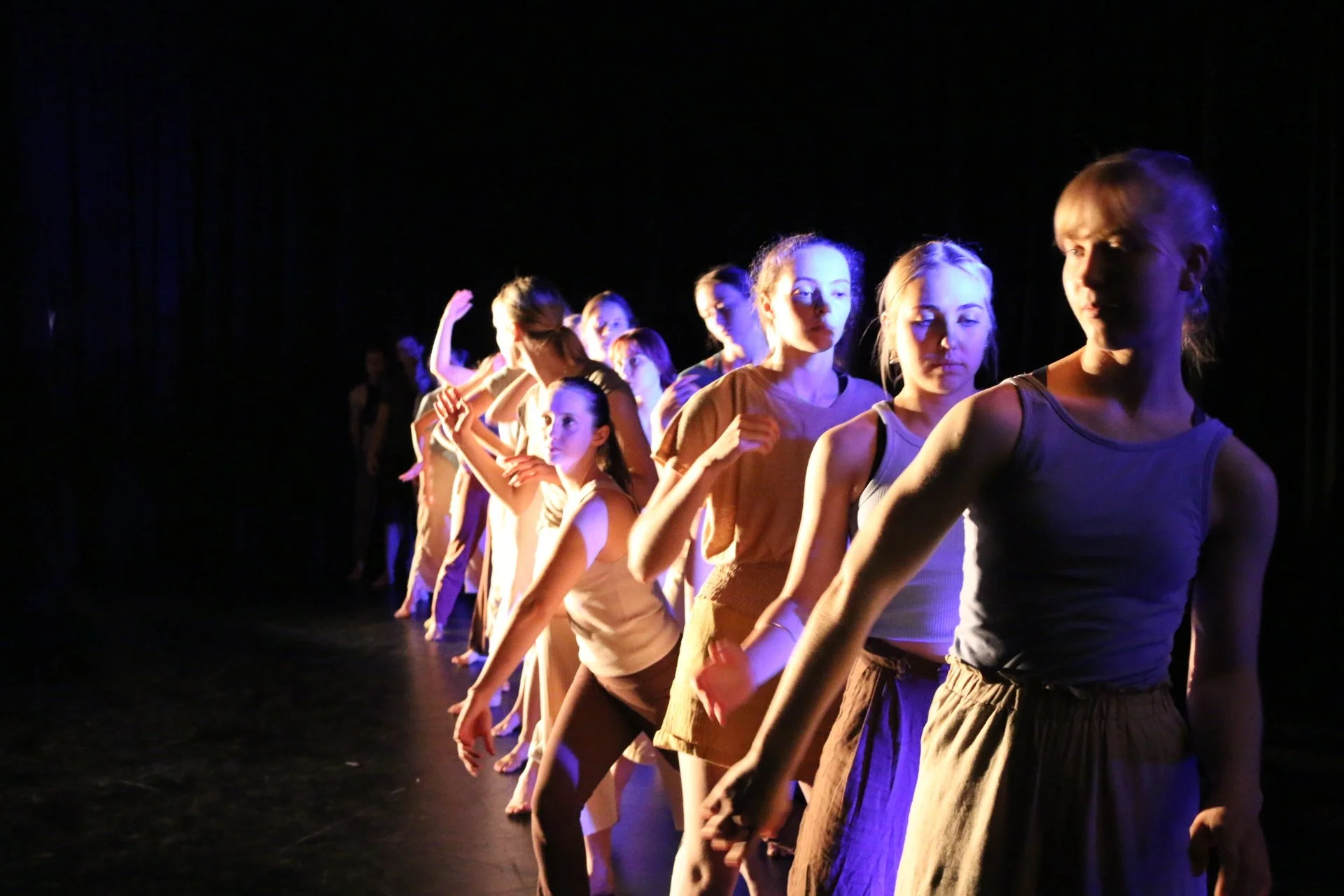Despite multiple lockdowns, our outstanding group of dancers have worked tirelessly to translate the poetry, prose, and scripts of the project’s passionate writing team into intricate, jarring, and thought-provoking movements, incorporating them with the intense performances of our dramatic thespians. Along with the aid of masterful visual effects, animations and the accompaniment of a rich and moving soundscape, The Inevitable Nature of Change is an insightful installation and life changing experience.
The ‘fluid’ nature of the theatre writing experience felt like culture shock to me and my ways of writing fiction on my own, but I sought to collect as much feedback as I could from my peers and producers, found a part in the production, and helped to deliver a show I am truly proud of.
It was hard to find the right balance between myself and the performers, to start with. I had no experience writing for the stage and so my writing lacked the certain rhythm and style that the performers were used to reading. Just the same, the performers had no experience when it came to my usual style of writing and how we deliver feedback on a writing table or when delivering an edit. The unfortunate truth to this is that it quickly turned to frustration - I wanted to know how to be better but I couldn’t understand why what they wanted from me was changing so frequently.
I turned to research and tried to fathom the age old clash between writers and actors. I found, in my experience, that I had to try and distance myself from my work. With my short stories and scripts, I was truly invested in my stories and my characters, and anyone else involved in the editing process usually understood that. In the case of the performance, i was writing to suit someone else’s visions and so whatever or whoever didn’t fit, got the chop.
There were however, others in the space who were more than happy to adapt to or, at the very least, support my endeavours and my experienced feedback in the writing sessions for the show.
Just like any workplaces, the theatre will be filled with people you love to work with and people you don’t. How you reacted and adapt to them is up to you as a creative practitioner.
my relationships with cast and crew within this project differed greatly from my time writing for ScratchThat. I was the only writing in a room full of performers. I was meant to be the quiet one who delivers notes and abridged scripts with cigarette stained fingers, wearing a waistcoat. Thos who know me or who have read my work will know that I am far from that picture, though I do romanticise about the tropes of my profession.
It was difficult to find my place. Alone - they at least had that part right - I struggled to find the “right” way of doing things in the theatre. While some people seemed to delight in pointing that out, without actually helping, a majority of the creatives on the project wanted to know more about where I came from and how I do things. More and more discussions developed around my eye for story telling and how their movements, music, poetry might fit into the narrative of the performance. I was humbled but more than happy to help others to realise the potential of their ideas.
The person I perhaps worked closest to in this regard was Quincy Wilson (@qajw625 on Instagram), a brilliantly talented, dramatic performer, as well as tech and visual arts guru. He was supervising the live video-feed and projection visuals aspects of our show, which meant creating or commissioning displays and animations to be projected onto screens and onto the dancers. While he had a keen eye for was looked good, he didn’t always know where in the show it would fit. Rather than try to argue his case for inserting animations for the sake of having them, Quincy turned to me to try and find a narrative within the animations. It was like Fantasia in reverse.
I tried to explain how various movements and patterns made me feel and whereabouts in the show I was feeling that also. Where the rhythm of the projections fit the rhythm of the performance and where there was a stunning visual but no relevant connection, we would discuss any changes or the reason behind cutting it.
I had a similar experience on the writing team with brilliant dramatic performer and gut-wrenching poet, Anastasia Notoras (@anastasianotoras on Instagram). Her poetry was raw and brilliant, but she looked at her writing the same way I look at mine. She wanted to know how it could be better. I was more than happy to provide her with a structural and copy edit of her work, as well as a discussion about my edit. I find this to be one of the most important parts of critiquing a peers work, especially in poetry, where someone’s emotions are out on the page. You want to make sure you understand the person before you pick them apart.
As we moved further into rehearsals, my job seemed done but I wanted to give more to the project that a bunch of scripts and stories left on the chopping block. I spoke with the producer about the nature of this being an actual performance piece meaning more than just a performance on the stage. Art installations of this fashion are an experience. Besides, the way the drama students took the story needed more than a little context, so I gathered a small team and came up with the concept for a souvenir program for the show. We got a green light and set to work. I had one week to write the entire thing - interviewing cast and project managers, writing context and introductions to the parts of the show, and the dance students that had grown fond of me pushed me to write a short story as a prologue to the performance. It’s one I’m still very proud of.
The result can be found in the below button. It was a grueling experience and a tough introduction into theatre so I hope you enjoy what remains of the show.





